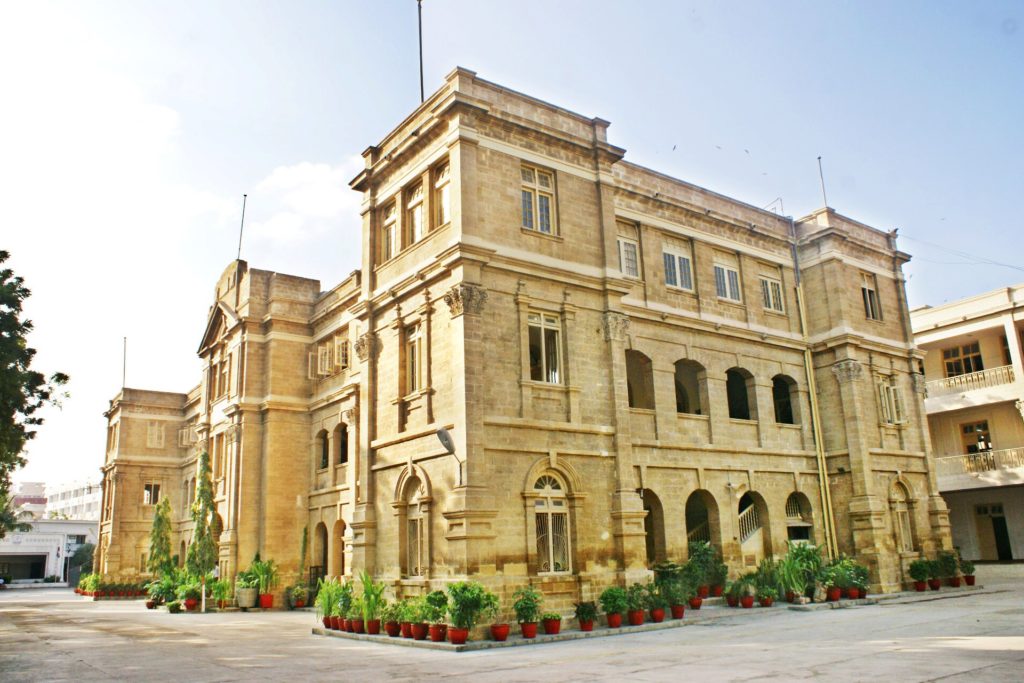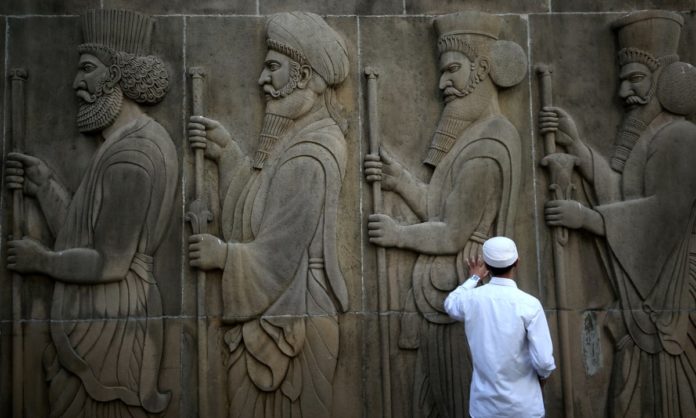Parsis (meaning ‘Persian’) are an ethnoreligious group of the Indian subcontinent whose religion is Zoroastrianism. They live chiefly in Mumbai and in a few towns and villages mostly to the south of Mumbai, but there are also a few families nearby in Karachi (Pakistan) and Chennai. There is a sizeable Parsi population in Pune as well in Bangalore. A few Parsi families also reside in Kolkata and Hyderabad. Parsis are one of the smallest ethnoreligious communities, with around 57,264 members as per the 2011 Indian census (down from 69,601 in 2001 and 114,000 in 1940). A census conducted by the Parsi community in 1995 for all of Pakistan showed that 2,831 Parsis lived across the country: 2,647 in Karachi, 94 in Lahore, 45 in Quetta, 30 in Islamabad and Rawalpindi, eight in Multan, and seven in Peshawar and other cities. The 2015 edition of the A & T Directory, which carries details of all Pakistani Parsis, notes that the community’s population had reduced to 1,416 in the country: 1,359 in Karachi, 32 in Lahore, 16 in Rawalpindi, seven in Quetta and two in Multan. The latest count of Pakistan’s Parsis reveals that the community has been reduced to 1,092, living in only Karachi, Lahore and Rawalpindi. One reason for the steady decline is that almost the entire younger generation of the community has gone abroad with no plans to return. Another reason is the purist marriage law of Parsis. If a Parsi woman marries a non-Zoroastrian, she’ll be forced to leave the community and face other restrictions. A third reason is that no one can become a Parsi, because it’s an ethnic identity as well. A person can accept Zoroastrianism, but they will never be a bona fide Parsi. This decline in numbers of Parsis is a global phenomenon which tells that one day the community will cease to exist.
The ancestors of today’s Parsis migrated to the region from modern-day Iran following the Muslim conquest of Persia in the 7th century CE. Parsis continued to migrate from the collapsed Sassanid Empire to Gujarat in between the 8th and 10th centuries CE, where they were given refuge to escape religious persecution during the early Muslim conquests. At the time of the Muslim conquest of Persia, the dominant religion of the region was Zoroastrianism, an Iranian religion that also served as the official state religion of the Sassanid Empire. Many notable Iranian figures actively rebelled against the Rashidun army and later Muslim caliphates for almost 200 years, while others chose to preserve their religious identities by fleeing from Iran to India during that time.
Going back to the second millennium BC Zoroastrianism is one of the world’s oldest continuously practiced religions, based on the teachings of the Iranian-speaking prophet Zoroaster. It has a dualistic cosmology of good and evil and an eschatology which predicts the ultimate conquest of evil by good. Zoroastrians believe that there is one universal, transcendent, all-good, and uncreated supreme creator deity, Ahura Mazda, or the “Wise Lord”. The representation of God in temples, altars or images is prohibited. Zoroaster also claims that Ahura Mazda is omniscient but not omnipotent.

Zoroastrian theology includes foremost the importance of following the Threefold Path of Asha revolving around Good Thoughts, Good Words, and Good Deeds. There is also a heavy emphasis on spreading happiness, mostly through charity and respecting the spiritual equality and duty of both men and women. Zoroastrianism’s emphasis on the protection and veneration of nature and its elements has led some to proclaim it as the “world’s first proponent of ecology.” The Avesta is the primary collection of religious texts of Zoroastrianism.
The religion states that active and ethical participation in life through good deeds formed from good thoughts and good words is necessary to ensure happiness and to keep chaos at bay. This active participation is a central element in Zoroaster’s concept of free will and Zoroastrianism as such rejects extreme forms of asceticism and monasticism but historically has allowed for moderate expressions of these concepts.
In Zoroastrian tradition, life is a temporary state in which a mortal is expected actively to participate in the continuing battle between Asha (cosmic order, good) and Druj (deceit). Prior to its incarnation at the birth of the child, the soul of an individual is still united with its higher spirit, which has existed since Ahura Mazda created the universe. During the life of a given individual, the spirit acts as a source of inspiration to perform good actions and as a spiritual protector. On the fourth day after death, the soul is reunited with its higher spirit, whereupon the experiences of life in the material world are collected for use in the continuing battle for good in the spiritual world. For the most part, Zoroastrianism does not have a notion of reincarnation.
In Zoroastrianism, water (aban) and fire (atar) are agents of ritual purity, and the associated purification ceremonies are considered the basis of ritual life. In Zoroastrian cosmogony, water and fire are respectively the second and last primordial elements to have been created, and scripture considers fire to have its origin in the waters. Both water and fire are considered life-sustaining, and both water and fire are represented within the precinct of a fire temple. Zoroastrians usually pray in the presence of some form of fire and the culminating rite of the principal act of worship constitutes a “strengthening of the waters”. Fire is considered a medium through which spiritual insight and wisdom are gained, and water is considered the source of that wisdom.

A corpse is considered a host for decay, i.e., of druj. Consequently, scripture enjoins the safe disposal of the dead in a manner such that a corpse does not pollute the good creation. These injunctions are the doctrinal basis of the fast-fading traditional practice of ritual exposure, most commonly identified with the so-called Towers of Silence for which there is no standard technical term in either scripture or tradition. Ritual exposure is currently mainly practiced by Zoroastrian communities of the Indian subcontinent, in locations where it is not illegal and diclofenac poisoning has not led to the virtual extinction of scavenger birds. Other Zoroastrian communities either cremate their dead, or bury them in graves that are cased with lime mortar, though Zoroastrians are keen to dispose of their dead in the most environmentally harmless way possible.
For a variety of social and political factors the Zoroastrians of the Indian subcontinent have not engaged in conversion since at least the 18th Century despite the fact that Zoroastrian high priests in principle allow conversion. Historically, the unique features of Zoroastrianism, such as its monotheism, messianism, judgment after death, heaven and hell, and free will may have influenced later religious and philosophical systems. Despite their small numbers, the Parsi community of Pakistan and especially of Karachi has made indelible contributions to many sectors of life. In the educational and health sectors Mama Parsi Secondary School, BVS Parsi School, NED University, Lady Dufferin Hospital and Spencer and Anklesaria Eye Hospitals come to mind. Deena Mistri, the great-granddaughter of the founder of Bai Virbaijee Soparivala (BVS) Parsi High School, and its former principal taught there 55 years and in 2002 she was awarded the Pride of Performance by the Government of Pakistan in appreciation of her services. Karachi’s landmark Teen Talwar was designed by Deena’s husband, the architect Minu Mistri. The first elected Mayor of Karachi was a Parsi named Jamshed Nusserwanjee Mehta, who is still fondly remembered today as maker of Modern Karachi. Ardeshir Cowasjee was a famous columnist and social activist. He wrote columns for Dawn wherein he openly criticized corrupt politicians and mafias in Karachi. The Avari family is famous for their business acumen and credentials in sports.
Contributed by:

Dr. Bettina Robotka, former Professor of South Asian Studies, Humboldt University, Berlin, Editor of the Defence Journal and a Consultant to the Pathfinder Group.





